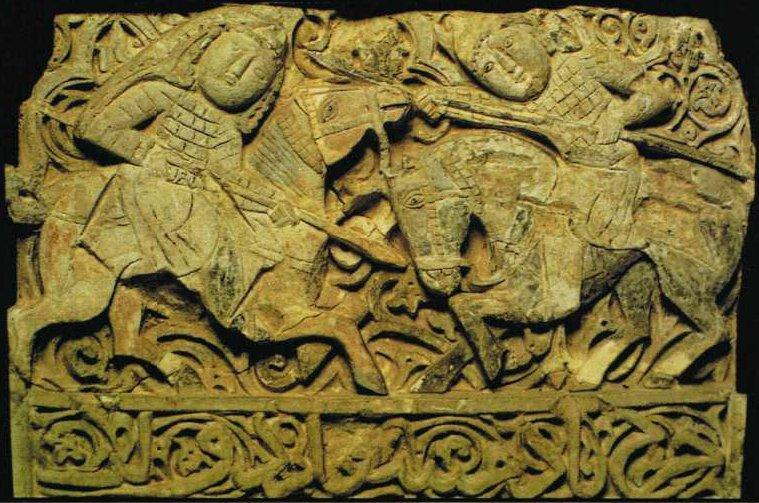 Cavalry and Star on a Seljuk Bas Relief
Cavalry and Star on a Seljuk Bas Relief |
Join Amazon Prime - Watch Thousands of Movies & TV Shows Anytime - Start Free Trial Now Try Amazon Audible Premium Plus and Get Up to Two Free Audiobooks Cavalry on a 12th century Seljuk Bas Relief A larger image of Cavalry on a 12th century Seljuk Bas Relief, Art Museum, Seattle Image source: The Crusades (Essential Histories) by David Nicolle RELIEF WITH TWO FIGHTING HORSEMEN, STAR MEDALLION 12TH - 13TH CENTURY PERSIAN Stucco, 43 1/8 x 19 3/4 in. (109.5 x 50.2 cm) Eugene Fuller Memorial Collection, 54.29 Provenance: Formerly in possession of [Demotte, New York and Paris, prior to 1938], when published in Pope; (unknown, 1938-1945); in possession of [Demotte, New York and Paris, 1945], when published in Pope; (unknown, 1945-1954); [Heeramaneck Galleries, New York, 1954]; purchased from gallery by the Seattle Art Museum, 1954 Seattle Art Museum |
